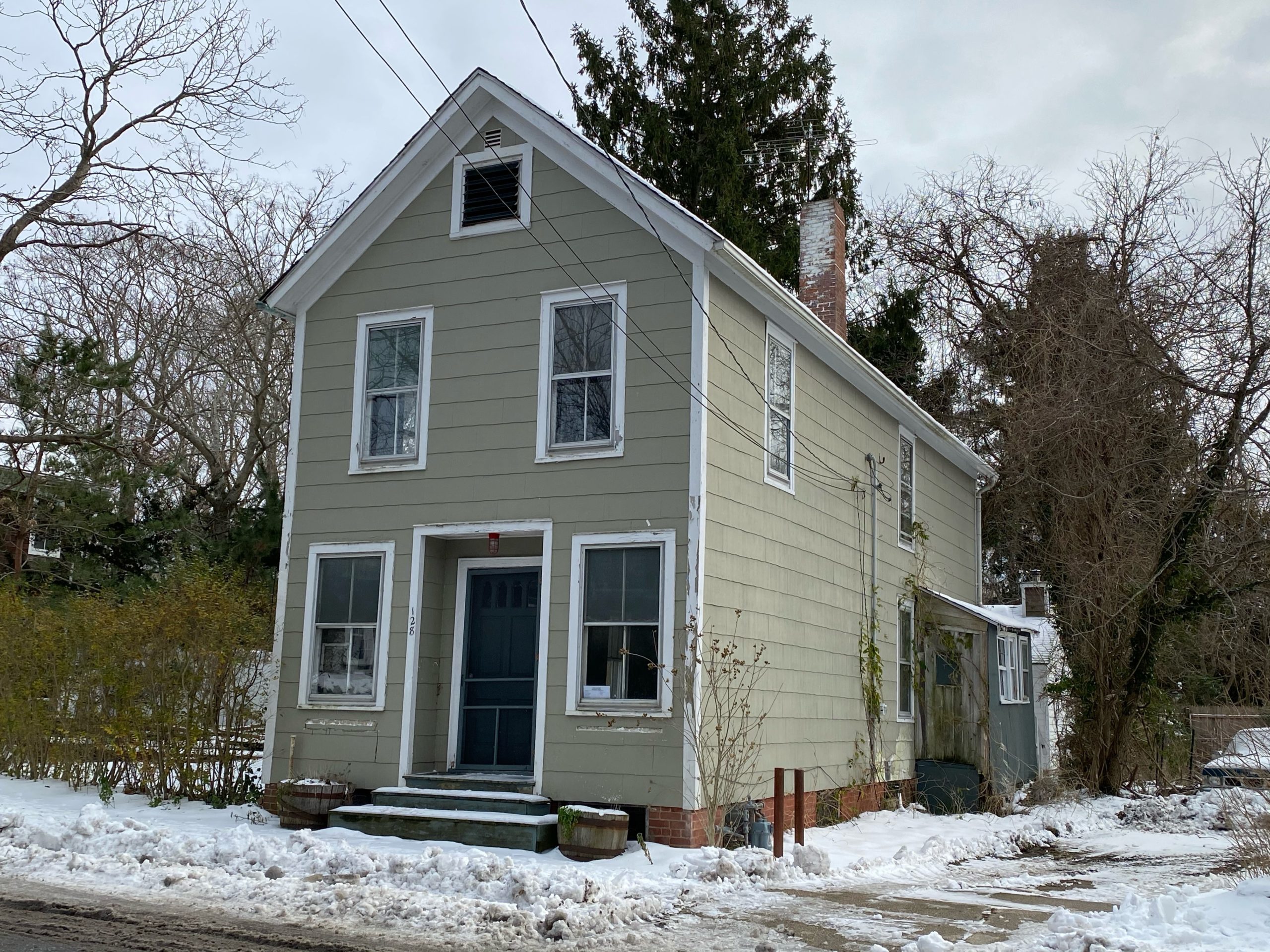
The owner of an 1895 Sag Harbor residence in the historic district came before the village’s Historic Preservation & Architectural Review Board on December 17 for permission to replace the house’s shingles, roof, windows and door — and came away with instructions for a “forensic investigation” into just what the current asbestos shingles are hiding.
Lynn Chin, the new owner of 128 Jermain Avenue, pitched new Anderson windows, an asphalt roof and unpainted Alaskan white cedar shingles. She’d also like to paint the front door robin egg blue and remove and replace the trim with matching wood.
Zachary Studenroth, the board’s historic preservation consultant, said the larger-than-typical windows on the front of the house suggest that the building was originally a business rather than a residence. That would also explain why it has a recessed and centered front door and why there is one chimney at the back of the building, he said.
Board member Val Florio confirmed Mr. Studenroth’s suspicions: “It was a bakery,” he said. “It was across the street from the Madison Market. That’s why the format is what it is.”
Mr. Studenroth recommended that the original windows be retained and fixed, with interior storm windows installed to make the house more efficient in terms of heating and cooling. Further, he said that a section of the asbestos siding should be removed to reveal if the original siding is intact. He said there are likely wood shingles underneath the asbestos shingles from the 1940s or 1950s, and the original window casings may be underneath the trim surrounding the exterior of the windows now. “This is part of the forensic investigation,” he said.
Ms. Chin said she had looked under the asbestos siding and discovered clapboard siding rather than wood shingles, adding that she had wanted clapboard siding anyway.
Mr. Florio said the building may have had one type of siding on the sides and back and another type on the front. “It will be interesting what you find out,” he added.
The windows will be investigated further to determine which ones can be rehabilitated. Mr. Studenroth said each will be considered individually, but generally speaking, the windows appear to be in good condition and could be made operable.
The matter was adjourned.
A proposal to add a sizable addition to a one-story bungalow on Glover Street in the historic district has now been revised to the point that the Historic Preservation & Architectural Review Board is leaning toward approval.
At the board’s December 17 meeting, a public hearing date was set for January 14 so any concerned village residents could have a say.
When the application first arose in November, the board members and Mr. Studenroth did not look favorably on a proposal to connect a Greek Revival style addition to the bungalow, finding the two styles to be incongruous.
Mr. Studenroth had advised that the practice for expanding on a historic building is to differentiate between old and new, and to ensure the original part of the house remains the predominant portion, visually. However, differentiating should be along the lines of changing the siding from shingles to clapboard, he advised, and not “going back 200 years in architectural style.”
The addition was revised and revised again between meetings and presented to the board multiple times until the style matched the bungalow to the board’s satisfaction while being set further back from the street than the original. The additional setback is intended to mitigate the visual impact of the new addition being 5.5 feet taller than the original portion of the house.
Also at the board’s suggestion, the proposed main entry was changed from the addition to the original.
“They reached an aesthetic solution to the situation with the addition,” Chairman Dean Gomolka said.
“This application has gotten to where the board had been, kind of, pushing it,” Mr. Studenroth said, “both in terms of the primary entrance to the housing being preserved, minimizing the aesthetic of the addition to something that is less formal and imposing. I think it answers all of the questions that you had. I think it’s a good design.”
Mr. Gomolka said the result is a phenomenal job on a challenging property with a house that is close to the property line.
A public hearing was set for January 14, when a landscaping plan will also be presented.
Mr. Florio, the architect of the project, abstained from the discussion and vote.
The new sign at the entry to the Ninevah subdivision, a historically African-American neighborhood that is part of the Sag Harbor Hills, Azurest, and Ninevah Beach Subdivisions Historic District, was approved on December 17.
The sign has green text and a green border, with a gold-colored silhouette of an osprey. The text reads “Ninevah” and, in smaller letters, “Private.”
The double-sided PVC sign is 36 inches by 24 inches and will be equipped with solar-powered downlights.